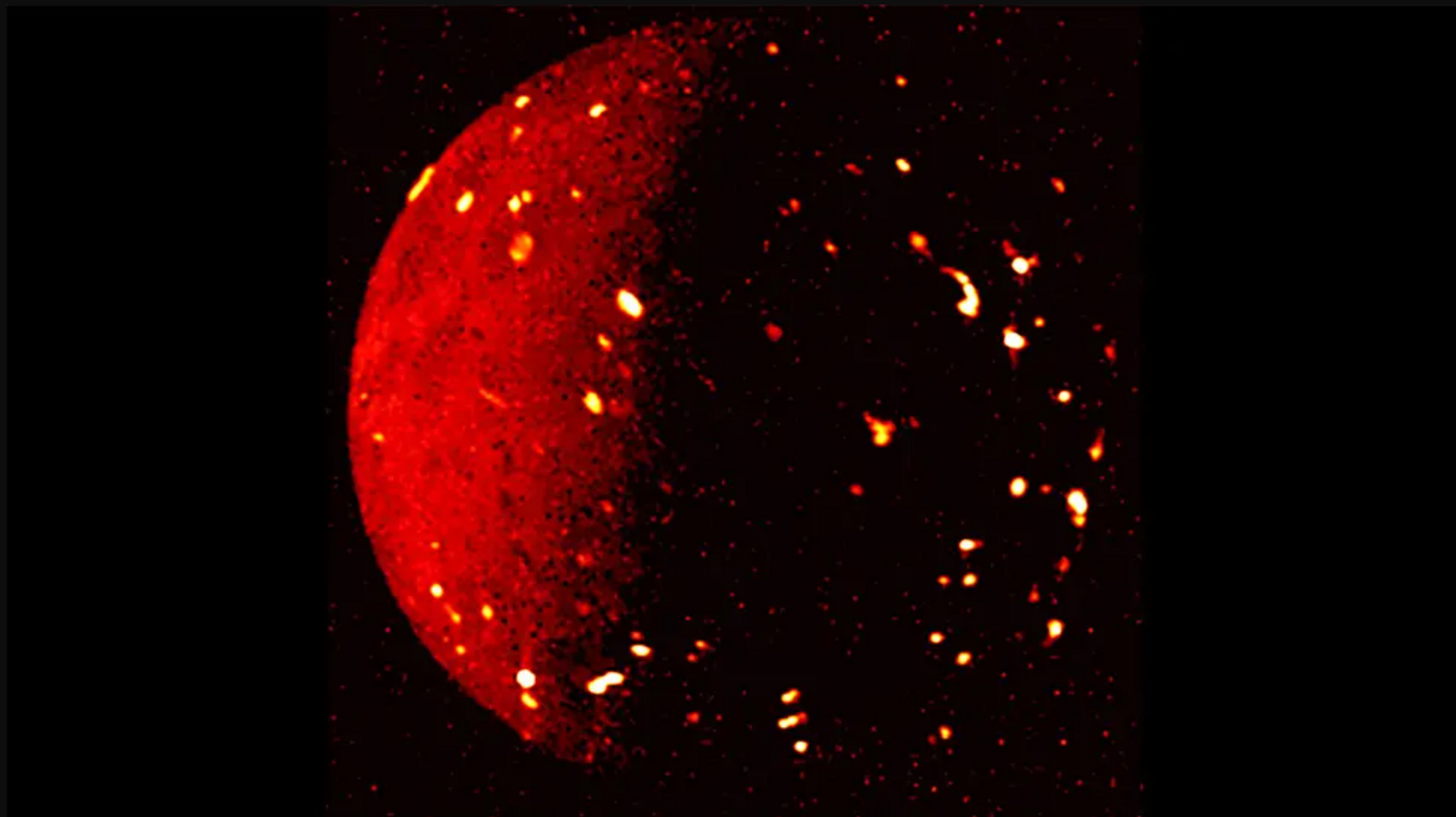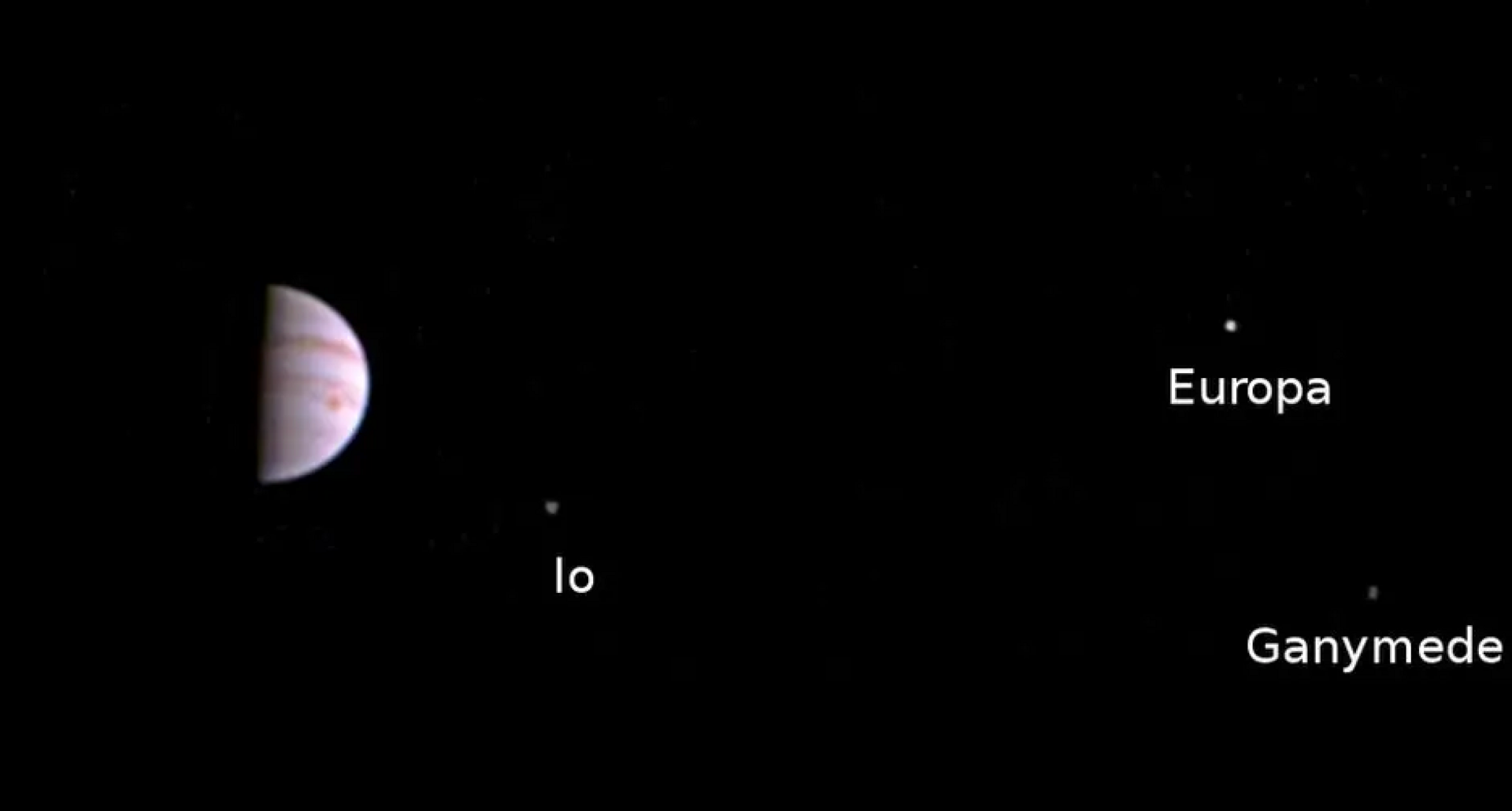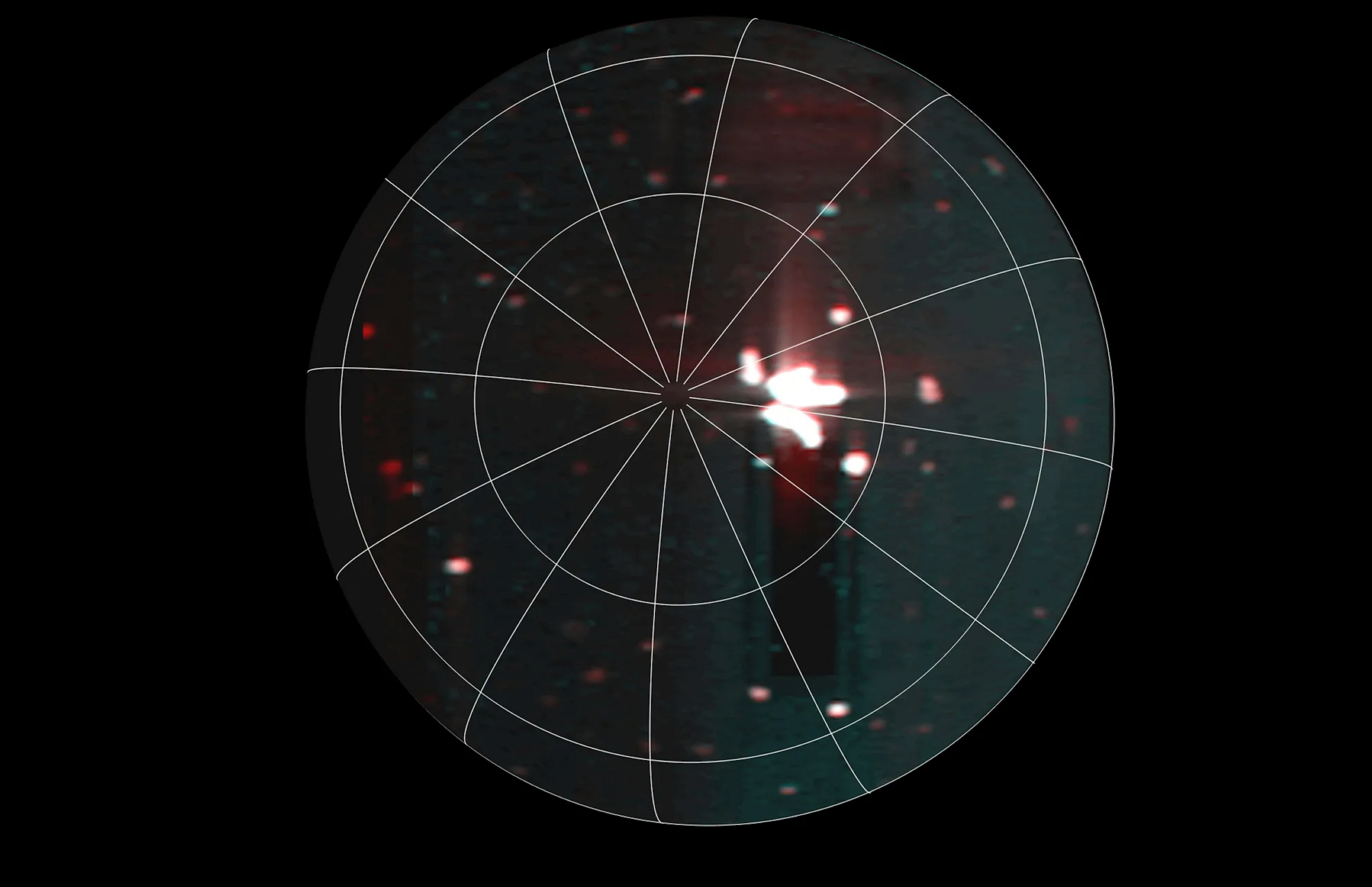Enormous space volcano spotted on Jupiter's moon

This infrared image of Io from 80,000km reveals hotspots: Volcanoes, lava flows and lava lakes
- Published
A massive volcano on Jupiter's moon, Io is more powerful than all of Earth's power stations combined - says American space agency, Nasa.
The huge volcano was recently detected during flyby of the Juno space probe.
The hotspot of volcanic activity, which is larger than Northern and southern Ireland combined, was spotted using infrared light instruments onboard the probe - which reveal features not visible to the human eye.
Jupiter's moon Io 'volcanically active for billions of years'
- Published20 April 2024
Solar system's super-bright volcano
- Published5 August 2014
Jupiter's volcano-covered moon
- Published19 December 2022
The most volcanic world in the solar system

This image taken by Nasa's Juno spacecraft shows Jupiter with some of its moons
Io, Europa, and Ganymede are three of Jupiter's moons that regularly move around each other, and the planet Jupiter, in a pattern known as an orbit.
As the moons travel around the planet they pull on each other gravitationally in such a way that their path is elliptical, or egg-shaped. This means Io's orbit moves towards Jupiter and out again.
Although Io is about the size of Earth's Moon, this gravitational tug of war means it's constantly being squished and squashed.
All of this movement melts parts of lo's interior, causing lava plumes, violent volcanic activity and ash to vent out into its atmosphere.
It's thought there could be 400 volcanoes on lo's surface, making it the most volcanic place in the Solar System.
Discovery ‘really blew our minds’

Nasa's Juno probe discovered the hotspot of activity on Io's southern hemisphere
The space probe Juno was sent to examine Jupiter in 2011, teaching its destination after five years travelling through space.
Originally a seven year mission the Probe has had its work extended as it continues to examine the planet and its moons.
Juno's latest pass of Io was completed on 27 December 2024, as it travelled 46,200 miles (74,400 km) above the surface and focussed its infrared instrument on the moon's southern hemisphere.
Fly over Jupiter's northern polar region. Animation produced from Juno imagery by Gerald Eichstädt
Juno principal investigator Scott Bolton of the Southwest Research Institute, says the latest set of data gather by the craft "really blew our minds".
"This is the most powerful volcanic event ever recorded on the most volcanic world in our solar system - so that's really saying something."
Experts say this kind of eruption is likely to leave a lasting scar on Io's surface.
Another flyby over Io by Juno on 3 March 2025 will look at the hot spot again and record changes to the landscape.
